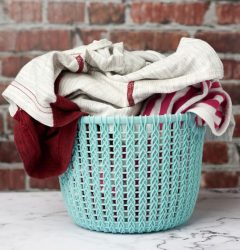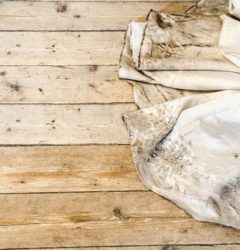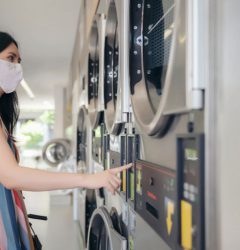
how to remove stains from clothes?
Sometimes, new clothes get retired soon just because of the stains. It is necessary to find how we can remove stains from clothes we love.
London Dry Cleaning Company is here to give you useful information along with the services provided.
If you are not sure to know about all steps of removing stains, this article will be useful.
Let’s start with 3 safe methods to remove annoying stains:
Method 1:
Try to examine the tags. The information provided on the tag will ensure you do not mishandle or damage your clothing with inappropriate washing techniques.
Treat with water. Keep the stain wet to prevent from becoming far more difficult to remove.
Try to keep the stain completely submerged in cold water. If it is not possible, blot it with water.
Be careful Never Rub, because rubbing the stain can spread it around and create a larger stain than you originally had.
Avoid contact with heat. Placing the stained clothes near any heat sources or in direct sunlight will speed the setting of most types of stains. Use only cold water and proper solvents.
Avoid pressure. If you press the fabric or scrub forcefully, the stain will be deeper in the fabric. So don’t grind the stains.

Method 2:
You should know the fabric type. The type of fabric that the stain is on, will determine the type of solvent to remove the stain. Tags on clothing usually indicate the type of fabric and the correct washing procedures.
There is some types of clothes materials:
Cotton: The best solvents for cotton are commercial detergents such as Tide and light acids. Although bleach can safely be used on white cotton fabrics, it is very harsh and can damage the clothes.
Wool: Although wool can be soaked, it may be susceptible to stretching and deforming.
As any acids or bleach can ruin wool, bring the wool garment to the dry cleaner for professional stain removal as soon as possible.
Synthetics: Clothing is made from fibers such as acrylic, nylon, olefin, polyester, and others are synthetics. For this kind of fabric use standard laundry detergents.
Do not attempt home remedies, as these can dissolve and destroy the plastics used in these fabrics.
Silk: Most of the time Soaking silk in cold water is a safe treatment way. But be sure to avoid spot cleaning silk.
As you know Silk is a very tricky fabric to remove stains from. So treat with exceeding care.
Now there is some substances which are effective to remove stains:
Most of these items are home remedies which remove stains.
-
- Water: Water is safe to use on every fabric. It is useful just to prevent setting, and can reduce the effect of dye stains.
You will likely need to use other stronger cleaning remedies than water alone for most stain removal. - Salt: This can be effective on a variety of stains, including blood, red wine, and others.
- Hydrogen peroxide: It can be useful to reduce pigment stains, such lipstick and grass.
- Bleacher: Use this one only on white fabrics.
- Detergent: Most detergents are safe to use on various fabrics. On the other hand, they are very effective to remove different types of stains, especially on greases, oil, or stains from food.
- Water: Water is safe to use on every fabric. It is useful just to prevent setting, and can reduce the effect of dye stains.
Method 3:
At first apply an absorbent, let the absorbent such as salt, and sit for fifteen minutes on the fabric. Then, remove and rinse.
After that apply the solvent. Reverse your stained garment. And select stain remover to the back of the stain. The solvent will soak through and push the stain towards the surface of the fabric.
Then let the garment rest. Allow the garment to lie for about an hour In order to give your solvent time to work. However, do not let the fabric dry out, or the stain may set, negating of all your previous effort.
Finally rinse the garment. After completing all the previous steps, put your garment immediately in the washing machine or wash it thoroughly by hand.

Don’t forget to check garments before drying. Don’t put the clothes into the drier until the stain is completely removed, as drying will set the stain.
Sometimes after washing and even ironing a piece of cloths, we find out there is a stain on
them.
How to Get Stains Out From Fabric That Has Been Washed & Dried?
Stains that have been washed and dried in are much harder to remove than a stain that is still damp.
Before being disappointed, attempt to lift the stain by treating it with a stain remover and then re-laundering the item.
This action can be different for colored clothes and whites.
For colored cloths we recommend these steps:
- Pour three tablespoons of white vinegar and two tablespoons of liquid detergent into a spray bottle. Fill the bottle with warm water.
- Shake the contents of the bottle to mix the components.
- Rub the solution into the stain with a clean cloth, and then dry it.
- Launder the cloth as you normally would. If the stain did not lift completely, repeat the above steps until the stain completely removed.
For white clothes only:
- Mix bleach with cold water. Follow the bleach manufacturer’s instructions for quantity of bleach to add.
- Place the garment in the water after the bleach has mixed with it.
- If after washing the stain was there, you can try washing it in bleach again–but, eventually, too much bleach will turn the item yellow.

Now that you’re a clothes care pro, you no longer need to avoid wearing your best items because of the fear of damaging them.
If you did all the above steps and the stains resisted to be on your items, be in touch with us. You can order online, ensuring the highest levels of quality control and garment care.








